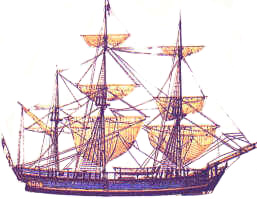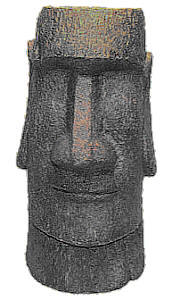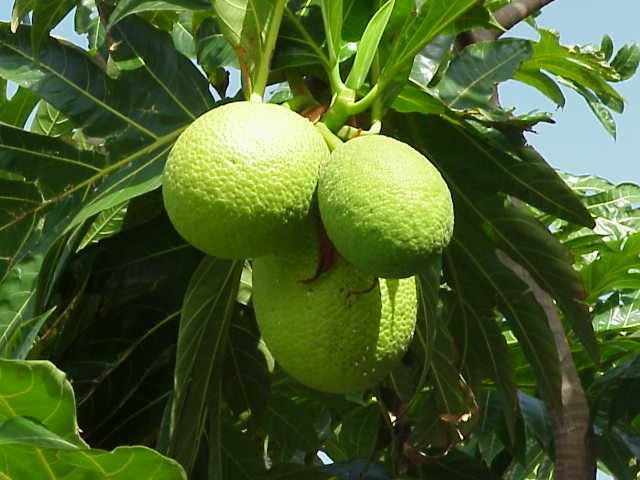Past Festival Themes
Polynesian Culture - Entertainment and More
The major purpose of the Pacific Islands Festival is not only to entertain, but to also educate the audience members about Polynesian cultures. An educational theme is selected each year and the program is tailored around the selected theme, via song, dance, educational notes or cultural displays.
2006 - Seafaring Ancestors and Their Canoes
Who were they? Where did they come from? Why did they travel? What is their legacy?
Polynesian people discovered and colonized islands in the Pacific Ocean before Christopher Columbus arrived in America in 1492. Polynesians sailed from Samoa and Tonga in the west to colonize the Marquesas Islands, Tahiti, and the Cook Islands[1] in the east, Hawai’i in the north, and New Zealand in the south. In their travels, they practiced an ancient custom called akaenua, which is a Cook Islands word to mean “to disembark from a canoe or to come ashore.” This custom involves the act of proclaiming hospitality and friendship between the people on the canoe and the people on the island. Some Cook Islands examples of akaenua were published for the islands of Mauke, Aitutaki, and Rarotonga. These examples took place in about 1100AD. The last known major Polynesian migration and akaenua occurred in 1350AD when seven canoes (Tainui, Te Arawa, Mataatua, Takitumu, Tokomaru, Kurahaupo, and Aotea) sailed from Avaiki (Tahiti and the Cook Islands) to New Zealand. Thereafter, the practise of akaenua discontinued due to the end of colonization and the arrival of Western civilization.
People leave their island in search of a better place to live. There are two main reasons. The pushing factor includes being victims of war, famine and drought, and overpopulation. The pulling factor includes a guarantee for life, honour, and the opportunity to seek another island to live and colonize.
Descendants, from those seven canoes who left Avaiki for New Zealand, can trace their genealogy to those people who live in the Cook Islands and Tahiti. Moreover, those who live in Hawai’i can trace their genealogy to Tahiti and the Marquesas Islands.
As our ancestors voyaged from one island to another, they took with them plants, animals, crafts, and their customs. They also took with them some of their Avaiki names. The mountains Orohena (Tahiti) and Oroena (Rarotonga) derive their original name from the island of Olosega in Samoa. Manuka, the marae of Uke Ariki of Mauke, Cook Islands, derives its original name from the island of Manuka in Samoa. The national marae of Taputapuatea in Raiatea, French Polynesia is the origin for Taputapuatea Marae in Rarotonga, Cook Islands and Kapukapuakea Heiau on Oahu, Hawai’i. New Zealand’s Mt Hikurangi derived its name from Mt Ikurangi in Rarotonga. Mt Maunaloa and Mt Maunakea in Hawai’i derived their names from Mt Maungaroa and Mt Maungatea in Rarotonga. There are other landmarks but these suffice for our purpose.
[1] A group of 15 coral and volcanic islands scattered in the South Pacific Ocean. The people are Polynesians and are called Maori or indegenous to the island. The Cook Islands is a former Protectorate of Great Britain and a former colony of New Zealand. The country is named after Captain Cook and is an internally self-governing nation located north-east of New Zealand.
2005 - Tiki and 'aumakua - The iconics gods of the South Pacific
A traditional and contemporary look at Tiki and ‘aumakua
Tiki Today
Polynesian pop culture of the 1950’s through the 1970’s has gained a resurgence recently, possibly due to the fact the famous Tiki Room at Disneyland is going through a renovation for the 50th anniversary to be reopened this summer. What can be more “escapist” than consuming exotic rum laced drinks adorned with flowers and stirring them with plastic replicas of oceanic art known as “tiki?”
But who was tiki and how did this all start?
Tiki of yesteryear
The definition of tiki is a guardian or god. Most often, a tiki is represented by a carved wood or stone image. Tiki can also be a euphemism for a male’s reproductive organs.
Kanaloa, Kane, Lono and Ku are the gods of Hawaii. Probably the most recognized tiki in Hawaii is a version of Ku, known as Ku-ka-ili-moku, who was a war god.
In the Cook Islands, their gods (and tiki) are Tangaroa (seafarers, fisherman), Tane (forest, birds and land), Rongo (peace and agriculture) and Tu-tavake (war), which are similar in name and function to the gods in Hawaii in that they are considered to be the “departmental” gods.
Tahiti’s history indicates their gods are Ta’aroa, Tane, and Ro’o.
After the departmental gods, next in line are the tribal gods that are the ancestors that were deified to a god-like status after the achievement of some monumental task, such as overtaking a warring clan or traveling long distances by canoe to settle new lands.
‘Aumakua - The family Gods
Next are the family gods, or ‘aumakua. These are often represented, though not limited to animal form, such as sharks, lizards, birds, turtles, whales and the like. The family ‘aumakua can be traced to a legend from the family land or to an event where an animal saved a family members life.
Many Pacific islanders still believe in the “mana” (power) of their ‘aumakua and it’s not unusual for them to be aware of their family ‘aumakua.
2004 - The Bounty, Bligh and Breadfruit
H.M.S. (H.M.A.V.) Bounty (ex Bethia)
In the late 1780’s the British Navy consisted of more than 600 ships of varying sizes and types. When the Admiralty selected the ship Bethia, a 2-1/2 year old vessel that could be easily be converted into a floating greenhouse for the purpose of going to Tahiti for the collection of breadfruit cuttings, the name of the ship was changed to Bounty.
According to long-standing navy superstition, changing the name of a ship is considered bad luck. In addition, the ship is commonly referred to as ‘H.M.S.’ for ‘His Majesty’s Ship’ when in fact the Bounty was an armored vessel. Therefore, the proper designation for the ship should be ‘H.M.A.V.’ for ‘His Majesty’s Armored Vessel.’


Easter Island Moai Tiki
H.M.S. Bounty
Captain William Bligh
William Bligh was born September 9, 1754 in St. Tudy, Cornwall, England. He started his career in the Royal Navy at the young age of nine and when he was 23 years of age he had joined Captain Cook on Cook’s third and final voyage in 1776. Bligh was the Master on the H.M.S Resolution and was responsible for the navigation of both ships on Cook’s mission to explore the Pacific even after Cook’s unfortunate death in Hawaii.
Bligh implemented Cook’s regimen of regular exercise and required the crew to bathe often and clean their laundry regularly in addition to continuous consumption of sauerkraut and limejuice to fight scurvy. It wasn’t until 1795 that limejuice rations were provided for all sailors in the Royal Navy, and to this day, British sailors are known as ‘Limeys.’
-
4292 Visitors since 02/21/06
Breadfruit
So what exactly is a breadfruit? Breadfruit (uru in Tahitian or kuru in Cook Islands Maori) grows on a tree. Just a bit larger than a football, it has a thick light to dark green skin, and it’s flesh is potato-like with a bland taste.
Kuru is consumed as a relish to the main dish, just like potato and bread are to the European dish the rice is to the Asian dish. Mai is the fermented ripe breadfruit and is used to preserve the kuru due to over-production or shaken from the trees by cyclones and hurricanes.
Multiple benefits are extracted from the breadfruit tree. The leaves are used to wrap fish, pork, and beef in the umu (underground oven) and to cover the umu. The young budding leaf is pounded for medicinal purposes while the tree sap is used as a putty to fill the canoe’s cracks. The trunk or branch is used as a canoe, canoe planks, outrigger, digging stick, paddle, ukarere (string instrument), pau (bass drum), or the pau mango (bongo).
One tree can produce enough fruits to feed a family for sixty years. It is considered to be the “staff of life” amongst the Pacific Islanders.
William Bligh, commander of the Bounty at the age of 33, was charged with conducting the first part of Sir Joseph Bank’s experiment to transplant a major food crop from one part of the world to another. Such a thing had never been done before on such a grand scale.
Breadfruit
